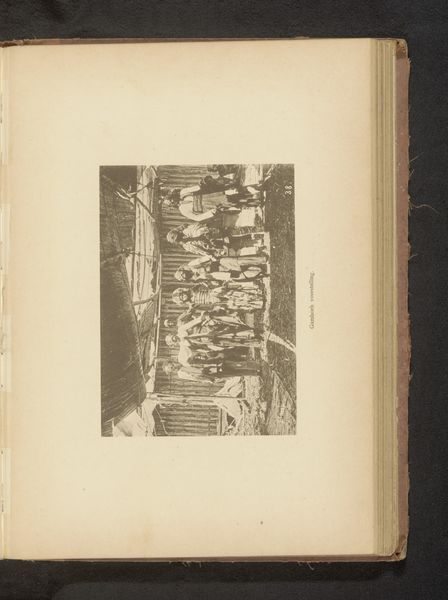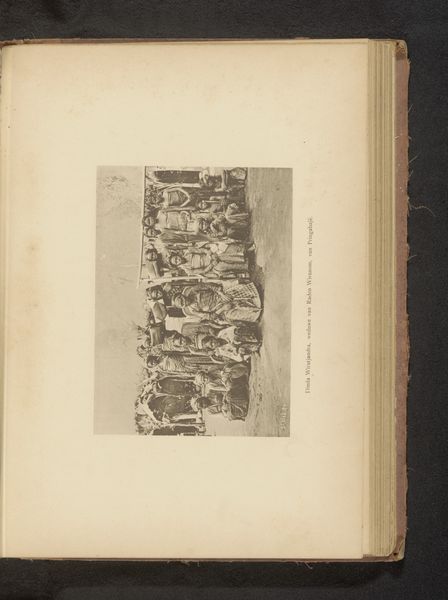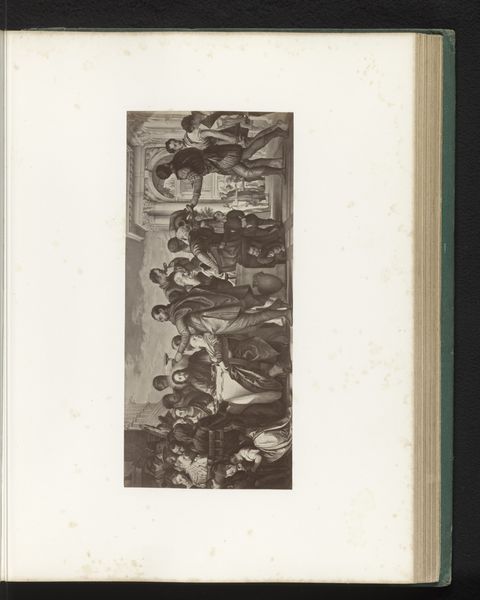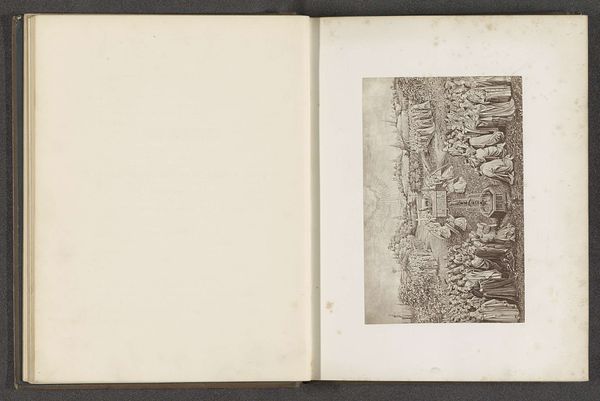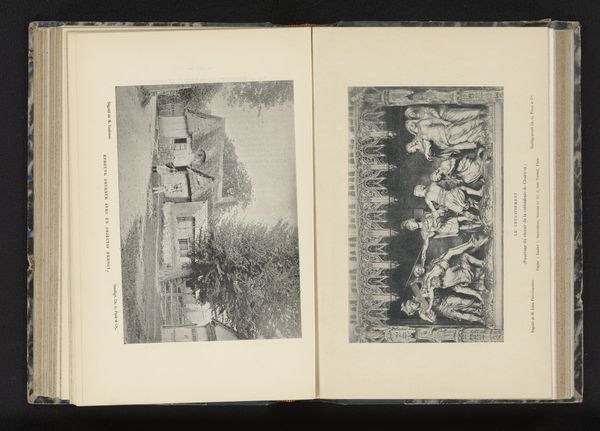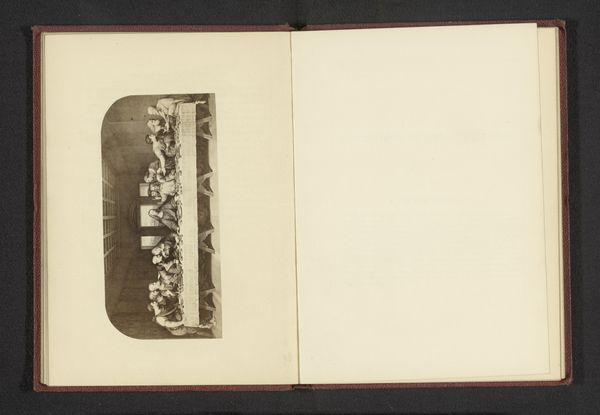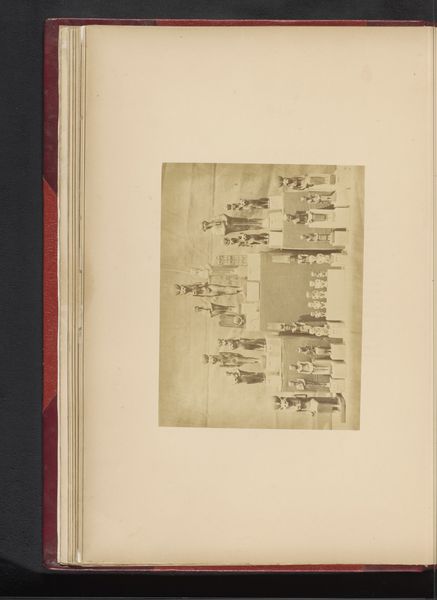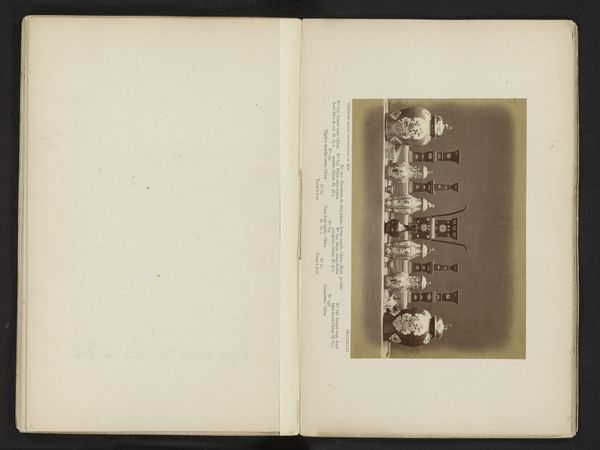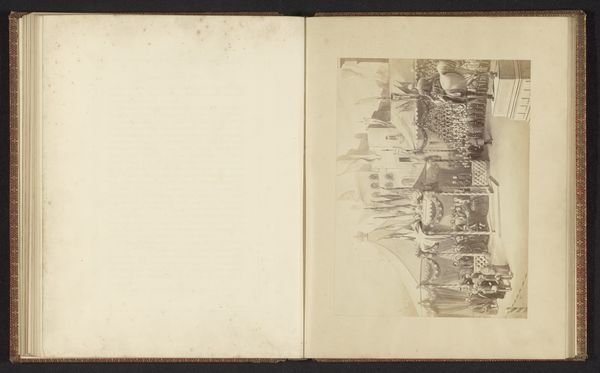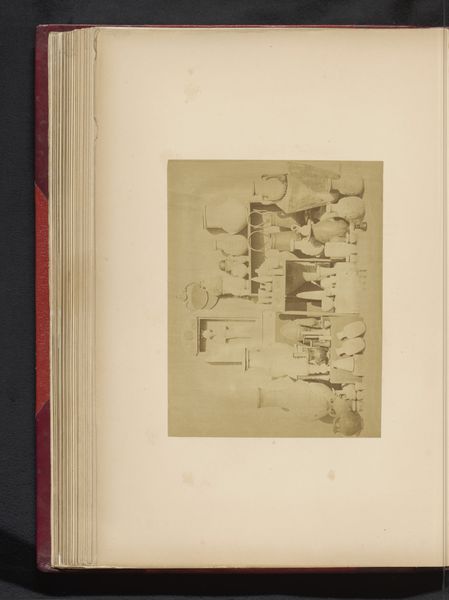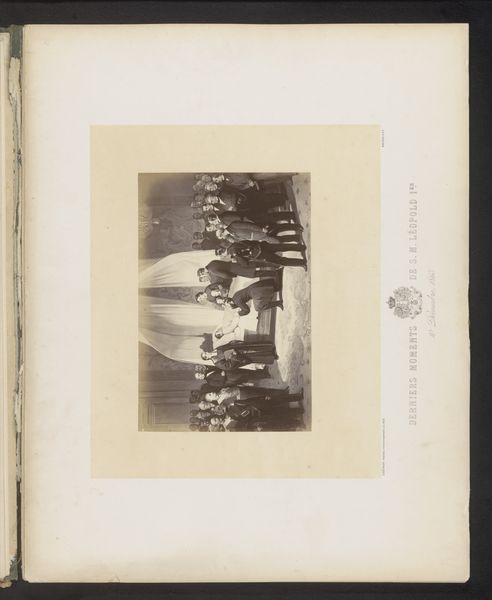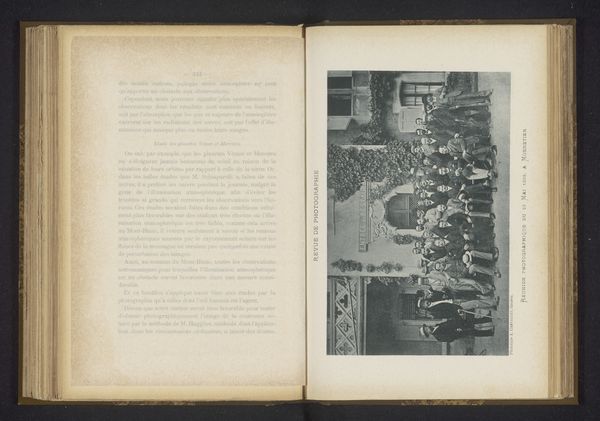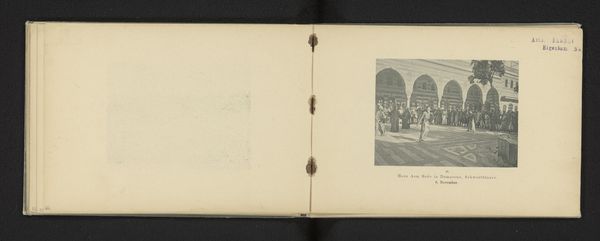
Portret van onbekende personen in kostuum, waarvan sommigen met masker before 1897
0:00
0:00
# print
#
group-portraits
#
realism
Dimensions: height 118 mm, width 163 mm
Copyright: Rijks Museum: Open Domain
Editor: So, this is “Portret van onbekende personen in kostuum, waarvan sommigen met masker,” or, "Portrait of unknown persons in costume, some with masks." It’s a print by Christiaan Johan Neeb from before 1897. What strikes me is how the costumes and the setting look... staged. I’m curious about the story behind this gathering. What do you see in this print? Curator: This is fascinating. To me, it immediately speaks to the performance of identity within a particular socio-political context. Think about the late 19th century: colonialism was at its peak. How might the act of wearing a costume, especially a mask, reflect the complex power dynamics and cultural exchanges happening at the time? Editor: That's a great point. Were these costumes meant to mimic or perhaps mock colonial powers? I mean, it looks almost like a theatre production, but who was the audience? Curator: Exactly! Consider who controlled the representation and distribution of images. Was Neeb's work intended for a European audience, contributing to a certain colonial gaze? Or was it intended for a different kind of viewer altogether? Think about who had access to art, to publishing, to power during that time. These are prints so the socio-economic background of art making plays a crucial role in the work, as well as in its audience. Editor: That puts it into perspective. So, the image isn't just about the individuals depicted but also about the institutions and power structures that framed its creation and reception. Curator: Precisely. This print then becomes a window into the cultural politics of the era, a reminder that even seemingly simple images can carry layers of social and historical meaning. Editor: I learned so much about questioning not just the image itself but the environment in which it was made and seen! Thanks. Curator: Absolutely. It reminds us to analyze art within its historical and societal frameworks.
Comments
No comments
Be the first to comment and join the conversation on the ultimate creative platform.
